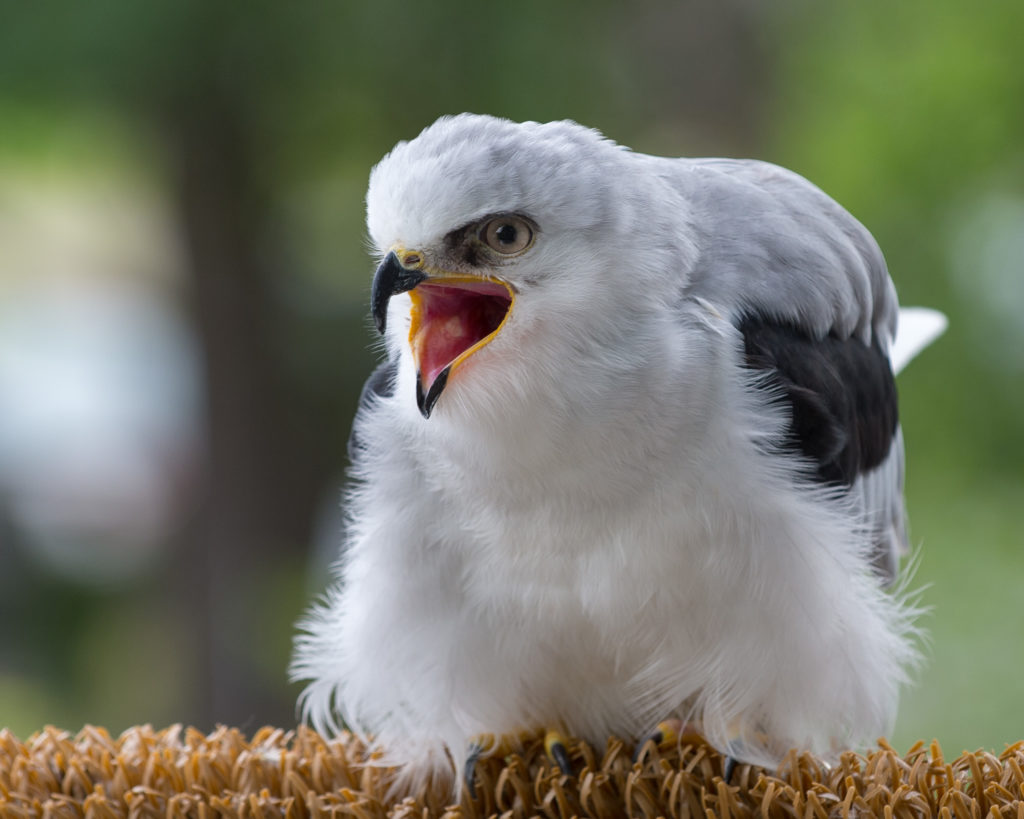White-tailed Kite
 White-tailed Kite
White-tailed Kite
Elanus leucurus
Formerly known as the “Black-shouldered Kite,” the White-tailed Kite can be readily identified by its white plumage, red eyes, and its hovering behavior while hunting.
They can be found year-round in distinct population patches that include western California and Oregon, southern Texas, and much of coastal and central Mexico. Once faced with extinction in California due to sport shooting and egg-collecting, federal protection has allowed this species to recover in the decades since the 1940s. Now, our state hosts one of the highest populations of White-tailed Kites in North America.
You can find these raptors in lower elevation habitats with open fields, where their main prey species—voles and mice—are in abundance. Avoiding the use of rodenticide in and around our homes can help this unique raptor thrive.
In 2017, Lindsay Wildlife acquired a White-tailed Kite—this was the first time in our 62-year history that this species had ever been at Lindsay! Aptly named Dragon due to that piercing call and her eventual blood red eyes, this White-tailed Kite originally came to our Wildlife Rehabilitation Hospital as a nestling patient. After a brief stay, she was returned to the wild. However, a rescuer brought the kite back to Lindsay two months later after seeing her fly into a building window. The neurological injury from the impact, coupled with the bird’s unusually docile behavior around people, rendered this kite non-releasable.
Dragon showed some loss of vision in late 2019. She began getting eye drops twice a day and spent time on our PEMF (Pulsed Electromagnetic Field) mat, which helps encourage the body’s natural recovery process. After a visit with veterinary ophthalmologist Dr. Tomo Wiggans, her eyes had started to absorb the cataracts first seen. She is moving around with much more accuracy and is doing well in her new outdoor aviary in our Nature Cove!
During her training sessions, Dragon will demonstrate just why these raptors are called kites by the signature hovering that these birds will do while hunting.
As Dragon matures, her eyes will slowly change from the current light brown into a blood red. We look forward to her “new look”!
